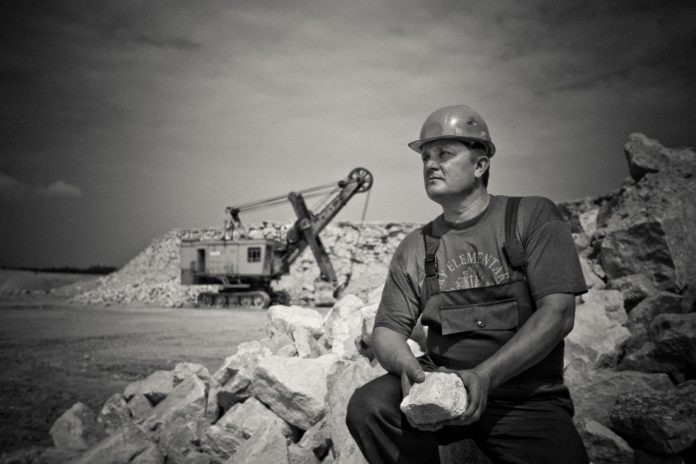Westmoreland Coal is moving closer to selling mines to a group of creditors in its bankruptcy reorganization, wiping out existing shareholders and leaving hundreds of millions of dollars in retired miners’ health care and benefits unpaid.
The Douglas County-based company, the country’s sixth-largest coal producer and oldest coal mine company still operating in the U.S., filed Oct. 9 for Chapter 11 bankruptcy protection in federal court in Houston.
A judge’s order last week allows the company to proceed toward its planned coal mine sale next month.
The order comes just after Gary Kohn, Westmoreland Coal’s CFO, submitted his resignation ahead of his Jan. 4 departure.
Kohn had netted $1.2 million in incentive payments beyond is his $472,355 salary over the preceding 12 months.
Westmoreland Coal reached a restructuring agreement with its creditors just ahead of filing for bankruptcy protection in the face of $1.1 billion in debt and an increasingly uncertain future for coal.
“Our goal is to emerge as a stronger Westmoreland, better positioned to grow and thrive,” said Michael Hutchinson, the company’s interim CEO, in a written statement at the time.
Westmoreland, incorporated in Pennsylvania in 1854, and its subsidiaries employ 2,971 people at 19 mines in six western U.S. states and two Canadian provinces. The company recorded $850 million in coal sales in the 12 months prior to seeking bankruptcy protection.
Its reorganization plan proposes an auction transferring its core mine assets to secure creditors, providing them ownership in the new business in proportion to their share of Westmoreland Coal’s debts.
The holders of secured liens, worth between $390.1 million and $670 million, could be fully repaid if the creditors’ stalking horse bid succeeds, according to Westmoreland Coal’s bankruptcy filings.
Holders of general unsecured claims worth between $740 million and $930 million would get nothing, court documents show.
Among the claims that wouldn’t be paid are retiree health care benefits worth $334.5 million, pension payments of $41.7 million and $21.8 million in funding for treating miners’ Black Lung disease.
There’s also concerns about what happens to any mines the secured creditors don’t want to buy — concerns primarily focused on Westmoreland Coal’s mines in Kemmerling, Wyoming and in Ohio.
They look most likely to be left out of the creditors’ purchase and liquidated because there’s no obvious future buyer for their coal, said Peter Morgan, a Denver-based Sierra Club attorney monitoring the bankruptcy.
Westmoreland’s other mines have long-term contracts or neighboring power plants as customers, he said.
A pair of insurers have argued for the rejection of Westmoreland’s plan, saying it’s unclear what money will be available for reclamation of mines left out of the sale to the stalking horse bidder.
Similarly, the Sierra Club’s concern is that Westmoreland’s acquired mines find new life with the reorganized company while the Kemmerling and Ohio mines could be left without funding for employees or reclamation.
The bankruptcy court set a Feb. 13 date to hear specifics of such concerns.
The process so far has appeared more focused on the sale to secured creditors and less focused on the assets that might not be acquired or what happens to those workers and the mine reclamation obligations, Morgan said.
“I am increasingly very, very worried about how Westmoreland is moving ahead on these parallel tracks,” Morgan said. “It’s going to get harder to return to and find money for that.”
About 1,386 shareholders of the company’s common stock, which was de-listed from NASDAQ’s main exchange April 25, would have their ownership stakes wiped out if the reorganization and asset sale goes through as planned, according to a U.S. Securities and Exchange Commission objection filed in the case in early December.
The SEC had pushed to get Westmoreland to change the way its plan would release company officials from liability — even those with no apparent connection the Chapter 11 reorganization — for potential securities law violations.
Meanwhile, retired miners have written to bankruptcy court Judge David Jones asking that their retirement medical benefits be preserved.
“Please do not break the promises that was made to take care of retirees and their spouses,” wrote Alva Ray Trail, 75, a resident of West Virginia. Trail said he’d been on the mining company’s health insurance since 1965 and has arthritis and respiratory difficulties from breathing rock dust.
His is one of several miners’ letters entered into the court record since Westmoreland filed for bankruptcy protection.
The company has active labor contract obligations to 871 active union miners, according to court documents, and to hundreds of retirees.
Even though the Sierra Club has pushed to stop burning coal, it’s hard to watch how difficult the process can be for people who work in the industry, Morgan said.
“We think this transition is inevitable and in some ways overdue, but the Sierra Club wants it to be just and equitable,” he said.





